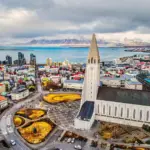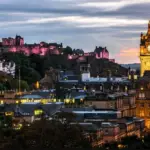
Where is Myanmar?
Myanmar, also known as Burma, is a country located in the heart of Southeast Asia. Situated between Bangladesh, India, China, Laos and Thailand, Myanmar covers an impressive area of approximately 676,578 square kilometers. Its strategic location along the Indochinese Peninsula makes it a crucial connecting point between South Asia and East Asia.
With distinct borders with each neighboring country, Myanmar stands out as a multifaceted nation full of natural and cultural riches. This diverse geography offers visitors a wide range of unique experiences to explore: from the majestic Shan Mountains in the east to the vast central plains of the country crossed by the mighty Irrawaddy and Chindwin rivers.
Yangon, the country's former capital and most populous city, is located on the southern coast, while Mandalay, the country's second-largest city and a traditionally important cultural center, is located in the north-central region. Furthermore, the current administrative capital is Naypyidaw—a planned city that replaced Yangon as the official capital in 2005.
Myanmar Overview
The Stunning Geography Surrounding Myanmar
Myanmar, located in the heart of Southeast Asia, is a country with a truly fascinating geographic location. Nestled between India, Bangladesh, China, Laos, and Thailand, Myanmar is like a hidden gem among these vibrant nations.
With an area of approximately 676,578 square kilometers, the country boasts a diverse and spectacular landscape. From the majestic Shan Mountains in the north to the vast plains of the Irrawaddy River Delta in the south, Myanmar offers visitors a captivating experience.
Little Explored Tourist Destination
Despite his natural beauty and rich cultural heritageMyanmar is still an under-explored tourist destination compared to its more famous neighbors in Southeast Asia. However, this only adds to the charm and authenticity that travelers can experience. visit this country magical. With many regions untouched by mass tourism, Myanmar offers visitors the unique opportunity to experience the authentic culture of the Burmese people and explore sacred sites without the crowds.
The Fascinating Cultural Diversity
In addition to its stunning geography and status as a little explored destination In addition to international tourism, Myanmar is also home to a truly fascinating cultural wealth. The country is home to diverse ethnic groups, each with its own distinct language, customs, and traditions.
From devout Buddhists to golden pagodas to the lively festivities of hill tribes, Myanmar's culture is a delightful blend of influences. ancient and modernVisitors who venture into this remarkable country are greeted with unparalleled cultural richness.
In this overview of Myanmar, we get just a glimpse of what this magical country has to offer. Through exploring its stunning geography, its status as a little explored tourist destination and its rich cultural diversity, it is clear that Myanmar is a hidden treasure waiting to be discovered by the most intrepid travelers.
So why wait? Embark on this unique journey and be enchanted by the beauty and authenticity of this captivating destination.
Myanmar Overview Location and borders with neighboring countries (Bangladesh, India, China, Laos and Thailand)
Myanmar, also known as Burma, is located in the heart of Southeast Asia. Nestled between Bangladesh, India, China, Laos, and Thailand, the country boasts a strategic geographic location that makes it a hub for diverse cultures and influences.
With a total area of approximately 676,578 square kilometers, Myanmar shares land borders with all its neighboring countries. These borders are characterized by diverse landscapes ranging from majestic mountains to meandering rivers.
Administrative divisions and main cities (Yangon, Mandalay, Naypyidaw) Myanmar is divided into seven states and seven administrative regions that cover the different ethnic groups present in the country.
Each state or region has its own regional capital and governor responsible for local administration. Myanmar's most populous and commercial city is Yangon (or Rangoon), located on the country's southern coast on the banks of the Yangon River.
Known for its well-preserved colonial buildings and beautiful Buddhist temples like the Shwedagon Pagoda, Yangon is an ideal starting point for exploring the country's rich culture. Another important city is Mandalay, located in central Myanmar.
With a rich historical and cultural heritage dating back to the Pagan Kingdom and the Mon Tounghoo Empire from the 13th to 19th centuries, Mandalay attracts visitors with its magnificent royal palaces, temples, and monasteries. Furthermore, the city is a vibrant cultural and artistic hub, known for its musical and theatrical traditions.
However, the Myanmar's official capital is Naypyidaw. This city was built in secret in the country's central plains and replaced Yangon as the administrative headquarters in 2005.
Although a modern planned city with impressive infrastructure, Naypyidaw is still a less touristy destination compared to Yangon or Mandalay. Notable geographic features (Irrawaddy and Chindwin rivers, Shan Mountains)
Myanmar's geography is marked by several notable features. The Irrawaddy and Chindwin rivers are the country's main waterways, serving as important trade routes and offering opportunities for unique cruise experiences.
The Irrawaddy River runs through the center of the country, providing vital resources for irrigated agriculture along its banks. Besides the mighty rivers, Myanmar is also home to the majestic Shan Mountains in the country's east.
This mountain range stretches for about 1,400 kilometers across the border with China and Laos. With peaks exceeding 2,500 meters in altitude, the Shan Mountains are a nature lover's paradise, offering stunning landscapes ranging from hills covered in lush forests to fertile valleys and picturesque waterfalls.
In short, Myanmar boasts a unique geographic location and diverse natural features that make it a fascinating destination for travelers. From its strategic borders with neighboring countries to its vibrant cities and stunning landscapes, the country offers an authentic and enriching experience for those seeking to explore its rich history. culture and nature.

what to do in Myanmar
Here are some suggestions of what to do in Myanmar:
- Enjoy the sunset in a Bagan Temple: Bagan is famous for its plains dotted with temples and pagodas. Climbing one of the temples at sunset offers stunning views of the landscape.
- Visit the Inle Lake: Inle Lake is known for its calm waters and the dancing of local fishermen. You can take boat trips around the lake and explore the floating villages and vegetable gardens.
- Know the U Bein Bridge in Amarapura: U Bein Bridge is the longest teakwood bridge in the world. It's a great place to walk and enjoy the view of Taungthaman Lake.
- Explore Yangon: Myanmar's former capital offers a fascinating blend of colonial architecture and golden pagodas. Don't miss the Shwedagon Pagoda, one of the country's most sacred sites.
- Discover Mandalay: Mandalay is the second largest city in Myanmar and has many attractions, such as the Royal Palace, Shwenandaw Monastery and Mahamuni Pagoda.
These are just a few suggestions for things to do in Myanmar. The country has much more to offer, from paradisiacal beaches to historical sites. It's always a good idea to research and plan ahead to make the most of your trip.
Summary of Ancient Civilizations that Influenced the Region
The region that is now Myanmar is rich in history and has been influenced by several ancient civilizations. One of the most prominent was the Kingdom of Pagan, which flourished between the 9th and 13th centuries.
This kingdom was known for its grand architecture, especially its temples and pagodas, many of which can still be admired today. The influence of the Pagan Kingdom on the cultural and religious development of the region is undeniable.
Another ancient civilization that left a lasting mark on Myanmar was the Mon Empire. Between the 9th and 11th centuries, the Mon established a powerful empire in the country's coastal region.
They pioneered the construction of impressive structures, such as the famous Thatbyinnyu and Shwedagon Pagodas in Yangon. They also contributed significantly to the development of the Burmese script.
British Colonial Rule and the Struggle for Independence Led by Aung San
During the 19th century, Myanmar was colonized by Great Britain as part of its imperialist ambitions in Southeast Asia. British rule brought significant changes to the region, including the introduction of Westernized administration and the exploitation of the country's natural resources. However, growing British influence also sparked nationalist sentiment among the Burmese.
Led by prominent figures such as Aung San, father of the leader of the current democracy movement, Aung San Suu Kyi, the struggle for independence began to gain momentum. After years of resistance and protests, Myanmar finally gained its independence in 1948.
Modern Era: Military Dictatorship and Transition to Democracy
After independence, Myanmar experienced turbulent periods in its political history. Despite initial hopes of a flourishing democracy, the country was dominated by a series of authoritarian military governments that restricted civil liberties and violated human rights. The longest of these military dictatorships lasted from 1962 to 2011, under the rule of the Military Junta.
During this period, Myanmar faced international isolation and significant economic decline. However, in recent decades, the country has sought a transition to a more democratic government.
Since 2011, political reforms have been slowly implemented, and significant progress has been made toward a more inclusive political system. Although challenges remain, Myanmar's transition to democracy is an inspiring example of the Burmese people's resilience in their pursuit of freedom and justice.

Vibrant Culture
A Fusion of Cultural Influences
Myanmar is a country with a rich and diverse cultural heritage, the result of a fusion of diverse influences over the centuries. Exploring the depths of Burmese culture reveals elements from Buddhist, Hindu, Islamic, and Chinese traditions.
This unique blend creates an unparalleled cultural experience for visitors. Buddhist influence is particularly evident in Myanmar's culture.
Temples and pagodas scattered throughout the country are living testaments to this ancient tradition. The Shwedagon Pagoda in Yangon is one of the most impressive in the world, with its imposing golden structure that shines brightly in the sunlight.
Furthermore, the Buddhist religion plays an important role in the daily lives of people in Myanmar, reflecting their spiritual practices and ethical values. However, Burmese culture has also absorbed influences from other religions and cultures over time.
The significant presence of Hindu and Muslim communities contributes to the country's cultural diversity. Traditional festivals such as Thadingyut (Festival of Lights) and Thingyan (Burmese New Year) reflect this unique blend of religious beliefs.
Conclusion
With its strategic location in the heart of Southeast Asia and its history rich in diverse cultural influences, Myanmar is truly a hidden treasure waiting to be explored.
Its majestic temples, stunning landscapes and warm people make the country An ideal choice for culture and adventure lovers. Amid the recent democratic opening, Myanmar is gradually becoming a popular tourist destination.
However, preserving their authentic culture and traditions remains a priority for the Burmese people. When visiting the country, it's important to respect local cultural practices and contribute to the sustainability of tourism.
So, if you're looking for an enriching and authentic cultural experience, look no further than Myanmar. Discover the wonders this country has to offer and be enchanted by its vibrant culture.
Lucas Wanderlust has a tireless spirit of adventure, always seeking new travel experiences. Fascinated by the world and the possibility of exploring unknown destinations, he fell in love with the sense of freedom and self-discovery that traveling alone provides. With a backpack on his back and a heart open to the unknown, Lucas embarks on exciting journeys, where each destination becomes a unique chapter in his life story. He gives himself body and soul to the magic of solo travel, inspiring others to follow in his footsteps and discover themselves through adventure.







